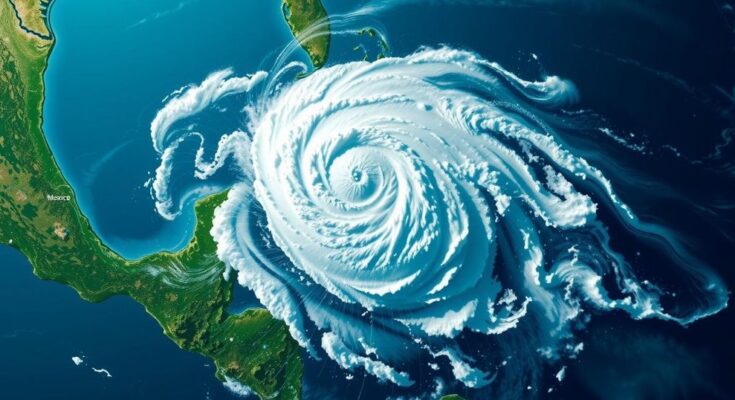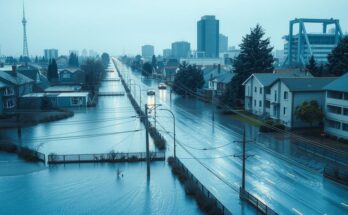Hurricane Rafael, which struck Cuba as a Category 3 storm, has now weakened to Category 2 while moving through the Gulf of Mexico. The hurricane has caused extensive damage across Cuba, knocking out power for thousands and collapsing hundreds of homes, posing further threats as it moves towards Mexico.
Hurricane Rafael made landfall in Cuba as a devastating Category 3 storm, resulting in widespread destruction and power outages. On Friday, the storm transitioned into a Category 2 hurricane, situated 230 miles from Progreso, Mexico, boasting maximum sustained winds of 110 mph while moving northwest. Forecasts indicate that Rafael may weaken and linger over the Gulf, posing threats of life-threatening surf and rip currents as it progresses westward toward Mexico. In the wake of Rafael’s fury, Cuba’s already strained power grid suffered significant damage, with the hurricane knocking out electricity for numerous residents and leading to the evacuation of approximately 283,000 people. Reports indicated the collapse of 461 homes and extensive debris scattered across the impacted areas. Specifically, the capital city Havana managed to restore power to about 143,000 homes, but many inhabitants remained in blackout conditions. This hurricane has exacerbated an ongoing energy crisis on the island, which had previously faced days of blackouts due to systemic issues within its energy infrastructure.
Hurricane Rafael struck the Caribbean region with severe intensity, previously impacting Jamaica and the Cayman Islands before landing in Cuba. The hurricane’s rapid approach resulted in widespread power outages, mudslides, and evacuations across several areas. Haiti’s consistent struggles with energy availability have received further attention due to this storm, highlighting vulnerabilities in the region’s infrastructure, which already faced mounting challenges before Rafael’s arrival.
In summary, Hurricane Rafael has left a trail of devastation across the Caribbean, particularly in Cuba, where it triggered devastating infrastructural damage and power failures. As it continues its pathway through the Gulf of Mexico, authorities remain vigilant about the storm’s potential weakening and hazards associated with its lingering impact, such as dangerous surf conditions. Restoration efforts are ongoing, although many residents continue to suffer from power outages.
Original Source: apnews.com




